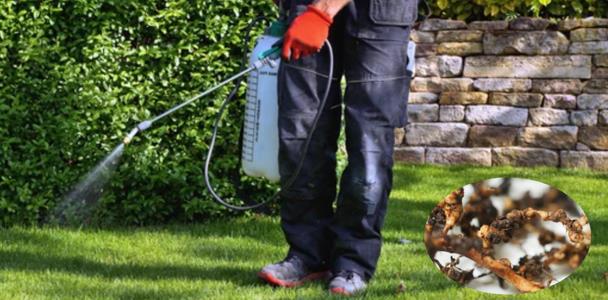Mechanism Analysis of Chemical Control for Plant Nematodes
Plant nematodes are among the most notoriously difficult crop pests to control. Two groups of chemical nematicides predominate, low-molecular-weight soil fumigants and contact carbamates or organophosphates. Among the many control measures, chemical control has the advantages of being fast, efficient, and economical and remains the main means of nematode control. In recent years, the number of nematicides has grown rapidly, but the process of development and research on nematicides is still slow. However, the study of the mechanism of action is the basis for advancing the development and utilization of new nematicides.
Lifeasible develops an advanced platform equipped with advanced instruments and professional staff to perform mechanism analysis with a high standard. We customize featured services according to customers' needs. We deliver satisfactory and reliable results and reports on time to our customers worldwide.
- Many muscle movements of plant nematodes, such as invading root systems, establishing feeding sites, and other processes that harm plants, are governed by neurons. Some genes involved in neurotransmission were first identified in Caenorhabditis elegans.
- Lifeasible provides analysis services for nematicide inhibition of nematode neurobehavior, including acetylcholinesterase inhibitors and glutamate-gated chloride channel variant modulators. Here, we analyze various nematicides such as carbamates, organophosphates, avermectins, etc.
 Fig.1 Chemical control for plant nematodes.
Fig.1 Chemical control for plant nematodes.
- Although nematodes do not have specialized respiratory organs and the exchange of external and internal gases takes place by diffusion through the body wall, metabolic studies have shown that both plant free-living and parasitic nematodes metabolize energy through glycolysis and the tricarboxylic acid cycle. Many nematode populations have the glyoxylate cycle.
- We provide analysis services for nematicide inhibition of nematode respiratory behavior, mainly for mitochondrial complex II electron transfer inhibitors or succinate coenzyme Q reductase inhibitors, with chemicals such as flumioxazin, cyclobutrifluram, etc.
We provide analysis services for nematicide regulation of nematode growth, which disrupts lipid synthesis and regulates nematode growth and development by inhibiting acetyl coenzyme A carboxylase.
- The mechanism of action of fumigant nematicides is multi-location inhibition, the earliest type of nematicides developed and applied, with the advantages of broad spectrum, high efficiency, low residue, and cost of use for soil nematodes.
- We also provide analysis services for nematicide muti-location inhibition of nematodes; specific types of insecticides include halogenated hydrocarbons, isothiocyanates, and other fumigants, etc.
Lifeasible offers services covering mechanism analysis of chemical control for plant nematodes to meet your research demands. With years of experience in the biological industry, our professional platforms can help our clients solve types of difficulties. If you are interested in our services or have any questions, please feel free to contact us or make an online inquiry.
For research or industrial raw materials, not for personal medical use!
 Fig.1 Chemical control for plant nematodes.
Fig.1 Chemical control for plant nematodes.